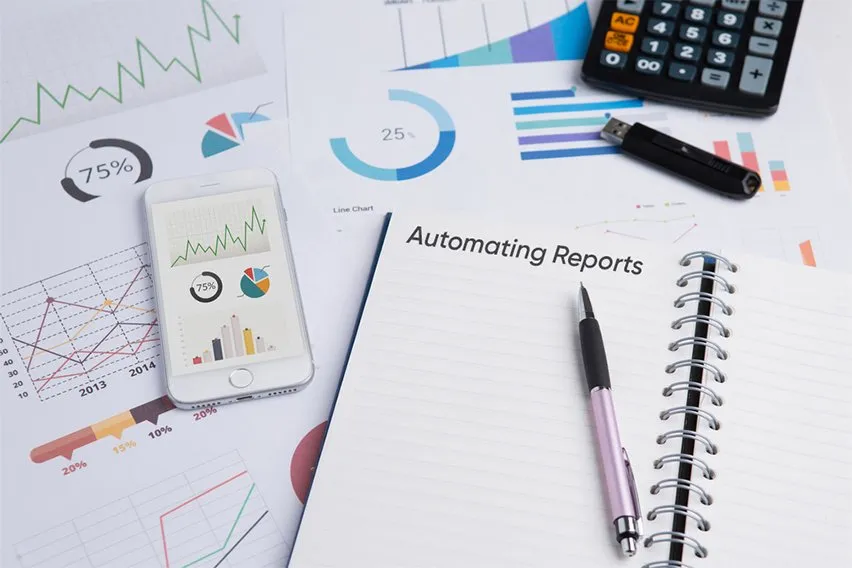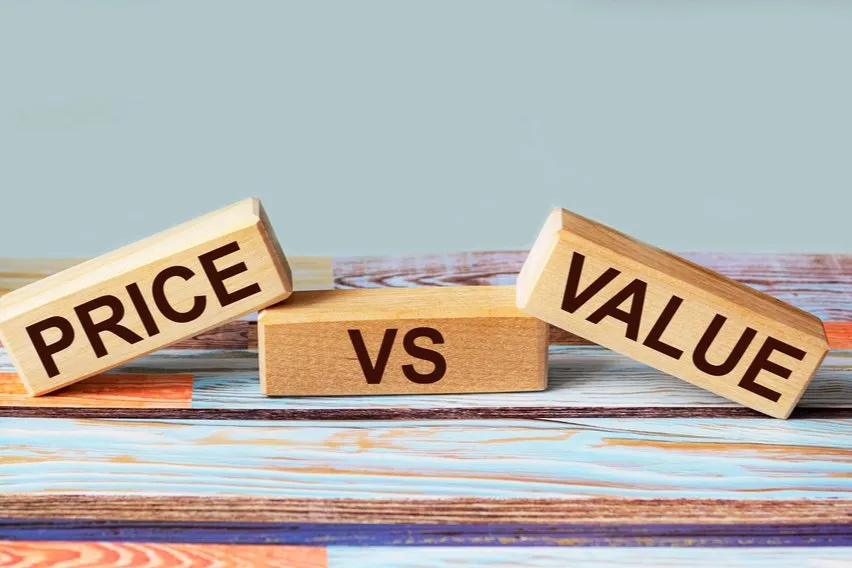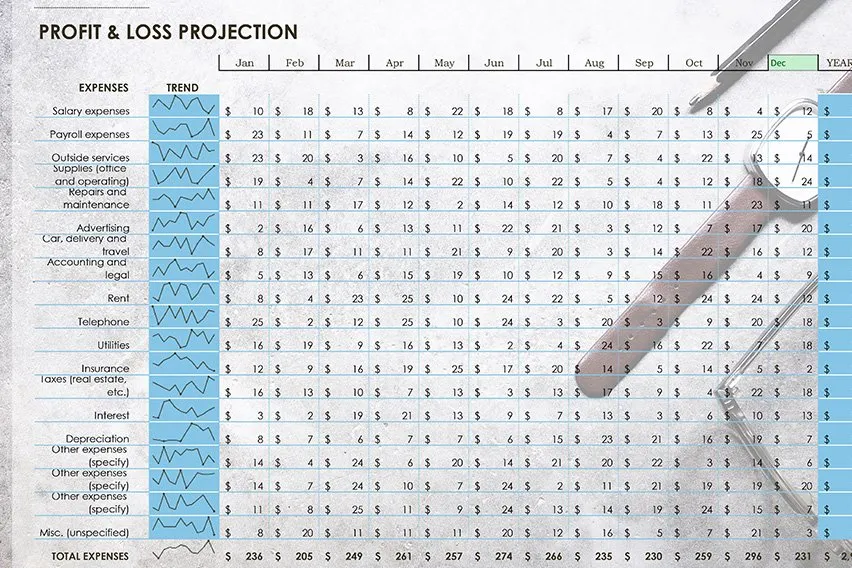10 Best Financial Reporting Software for 2025

Your business is more than just a way to pay the bills. It has the potential to generate wealth, provide security, and offer promise. Financial reporting software as a service can streamline your accounting systems and simplify tax time. Having the right financial reporting software in place can help grow your business and maximize its potential so you can do more. We’ve compared the pros and cons of the 10 best financial reporting software below. Read on to learn more.
Table of Contents
- 10 Best Financial Reporting Software
- Types of Financial Reporting Software
- Comparison of Financial Reporting Software Based on Business Size
- Start Managing Your Finances Now!
- Frequently Asked Questions
10 Best Financial Reporting Software
Below, you can find a list of the best financial reporting software to help give you a snapshot of your options by examining their main features and pricing.
1. FreshBooks (Best for Small Businesses)

Features
FreshBooks simplifies the entire accounting process for small businesses, from payroll to tax time. It offers financial reporting solutions, including a profit and loss report, sales tax summary report, general ledger, trial balance, and chart of accounts. You can use these and other financial reports to create year-end and quarterly financial presentations.
FreshBooks is more than just financial reporting software. It provides a color-coded breakdown of spending, easily editable invoices and proposals, custom reports, a summary of most recent activity, mobile mileage tracking, time tracking, and project profitability reports.
It has automated functions like payment recording, expense recording, tax calculations, bank account reconciliations, and an Accountant Access feature to give your financial team the tools they need to serve your business.
Pricing
FreshBooks offers tiered, affordable pricing. Starting at $21.00/month, Lite includes features best suited to a sole proprietor. The most popular tier is Plus at $38.00/month and has all the features of Lite in a bulkier plan. The Premium plan is $65.00/month and offers extended features like automated client emails with dynamic fields, client retainers, and unlimited billable clients and proposals.
You can also customize your plan to suit your business needs.
2. QuickBooks
Features
QuickBooks offers simplified financial reporting software solutions that enable you to run and export various reports, including expense reports, profit and loss reports, custom reports, and balance sheets. You can also get a snapshot of your business with the customer balance summary and accounts receivable aging summary.
Drawbacks
Many of its most useful features, like customized professional reports and the project profitability tool, are only available to high-tier pricing clients.
Learn more about how FreshBooks compares to QuickBooks on our FreshBooks vs QuickBooks page.
Pricing
Pricing starts at $30/month for the Simple Start plan, $60/month for the Essentials package, and $90/month for their most popular Plus plan. The highest tier is the Advanced package for $200/month, which includes everything in the Plus plan and additional features like more users, employee expenses, exclusive premium apps, workflow automation, data restoration, 24/7 support, and revenue recognition.
3. Xero
Features
Xero offers financial reporting software tools. You can input contacts, generate invoices, see balances, and see your financial information and accounts. You can sync your bank and invite your accountant to access your Xero online account. The up-to-date accounting reports are customizable, allowing you to insert formulas to calculate and compare actual versus budgeted and rearrange columns.
Drawbacks
Project profitability tools and expense tracking are only available to high-tier pricing clients. You cannot add multiple users, get live support, or utilize a scheduling program.
Learn more about how FreshBooks financial reporting software compares to Xero on our FreshBooks vs Xero page.
Pricing
Xero offers three pricing tiers: Early at $15/month, Growing at $42/month, and Established at $78/month. With the Established plan, you get all the features offered with the other 2 plans, plus you can track projects, use multiple currencies, claim expenses, and utilize Analytics Plus.
4. Wave
Features
Wave offers free accounting and invoicing software. You can manually enter expenses and receipts, track payments and income, and generate invoices.
Drawbacks
The free software options offer basic features. Payments subscription, Mobile Receipts plan, and full-service customer support are all additional subscriptions.
Learn more about how FreshBooks financial reporting software compares to Wave on our FreshBooks vs Wave page.
Pricing
Wave offers two free software plans: Accounting and Invoicing. To receive payments for your invoices, you’ll need Payments, the pay-per-use feature. The fees are 2.9% and $0.60 for Visa and Mastercard credit cards, 3.4% and $0.60 for AMEX, and 1% for bank payments. The Mobile Receipts plan is $8/month, and the Payroll plan is $40/month plus additional user fees.
5. Sage 50 Accounting
Features
With Sage 50 accounting, you can access dashboards and reports for data visualization of your business and utilize core financial modules, including financial reporting. You can also create and track invoices, monitor income, record transactions, automate some administration, and accept payments. The more your business grows, the more Sage products can grow with it.
Drawbacks
This product has a longer learning curve. It is better for medium businesses. They make another, pared-down product called Sage Intacct, but the cost is only available by quote.
Pricing
Sage 50 Pro Accounting is $58.92/month for simple accounting software for a small business with one user. The Premium Accounting plan is $96.58/month for advanced accounting software with one user. Sage 50 Quantum Accounting is $160/month for the full Sage 50 experience with one user.
6. Cube
Features
Cube is a spreadsheet-native financial planning and analysis (FP and A) platform. This software focuses on the processes involved in planning, forecasting, and budgeting. It offers endless integrations for billing and invoicing programs, spreadsheets, and accounting and finance.
Drawbacks
Cube has limited reporting, modules, and a visual user interface. It also lacks some automation features that make financial reporting software beneficial to a small business looking to save time and avoid troubleshooting.
Pricing
The Essentials plan is $1250/month, and the Premium plan is $2450/month. The premium plan offers everything in the Essentials plan plus connection to any GL (general ledger) system, multi-currency reporting, and platform APIs (application programming interface). There are additional fees for users, connectors, and workspaces.
7. Oracle NetSuite
Features
Oracle Netsuite financial management system features include a general ledger, accounts receivable and payable, and tax, payment, cash, and financial management. It facilitates efficient and accurate reporting. You can also generate statements and disclosures to ensure compliance with IRS requirements.
Drawbacks
Oracle doesn’t offer many customization options. The features vary greatly by module, and learning all the parts relevant to your business can take longer than some of the more intuitive programs. Their pricing for modules and tiers is not transparent.
Pricing
Pricing is unavailable on the website. You must request a quote by providing your annual revenue, business type, current software, number of employees, HQ location, and challenges with your existing software. The pricing of the yearly license fee consists of the core platform, optional modules, and the number of users.
8. Workday Adaptive Planning
Features
Workday financial reporting software offers cloud-based solutions to help businesses with their reporting process. You can create ad hoc reports, customize reports and modules, and utilize the intuitive interface and visual dashboards to access analytics and reporting. It offers modules specific to a variety of industries. Workday also monitors and applies appropriate payroll taxes by state to ensure compliance. The Finance, HR, and Payroll suite helps you standardize workflow to ensure everyone knows their tasks and when they are due.
Drawbacks
It struggles with integration, process management, and real-time data reporting.
Pricing
Pricing is unavailable on the website. You must request a quote.
9. Vena Solutions
Features
Vena Solutions is a planning platform that offers seamless integration with Excel. It features audit trails, version control, workflows, template collaboration, and data drill-down. Vena also provides a certified Microsoft 365 add-in for fast installation.
Drawbacks
This software is more useful for budgeting, forecasting, and planning than running your basic bookkeeping operations. There is a longer learning curve than other financial reporting software, leading to higher initial costs.
Pricing
Pricing is unavailable on the website. You must request a quote, speak with a specialist, and participate in a tailored demo. The Professional tier provides standard support, a customer success manager, and access to the Vena platform and customer portal. The complete tier offers everything in the professional plus Vena insights and premium support.
10. Workiva
Features
Workiva connects teams and processes. It can create critical financial reports and help you demonstrate measurable progress in your ESG (environmental, social, and governance) goals. Workiva can help you simplify reporting and compliance for your business, manage and automate tasks, create custom data sets, and connect with any of the 60+ pre-built connectors. It features drag-and-drop capabilities for ease of use.
Drawbacks
Workiva offers robust features for large businesses looking to increase their social footprint and utilize APIs for new and established communication and workflow. The software is used mainly for higher-level reporting than the day-to-day financial reports desired by small business owners.
Pricing
Pricing is unavailable on the website. You must request a quote.
Types of Financial Reporting Software
There is more to choosing good financial reporting software than just the price. Different types offer specific tools that may benefit your business now and as you grow.
Accounting Software
Accounting software helps you track, categorize, and report the financial details of your business. It simplifies the accounting process and reduces the amount of space a business needs for the storage of paper documents.
There are three main types of accounting software: ERP (Enterprise resource planning), billing and invoicing, and payroll management. ERP tools generally include payroll management, billing, and invoicing.
If you plan on growing your business, choose the best accounting software that does more than basic accounting tasks. FreshBooks can grow with you over a stand-alone product that only handles billing and invoicing or payroll management.
Invoicing and Payment Software
Invoice and payment software are considered stand-alone, and their functions are limited to generating invoices and accepting and processing payments. Look for a financial reporting system with integrated invoicing software to simplify your accounting process. A program that integrates a payment-accepting feature will make it easier for your business to collect, organize, and track income in real time.
You can learn more about how to safely and securely accept payments online by checking out our article: 7 Best Ways To Accept Payments Online.
Tax Management Software
Tax management software helps businesses streamline their tax time. It can manage regulatory reporting and limit human error through automated systems. Tax management software can take the guesswork out of pricing, billing, and payroll through location-specific and item-specific tax addition. The auto-application of taxes can ensure you are compliant with regulations in the locations where you do business or have employees. It can also limit end-of-year surprises come tax time.
With tax management software, you can utilize reporting features that simplify your tax return process, easily preparing your taxes.
Budgeting Software
The success of any business relies on a realistic picture of your overhead, market share, and pricing. Using budgeting software can help you create your business’s budget. A well-designed budget is a critical part of any investor proposal or finance application.
Additionally, incorporating proposal software features into your financial planning not only ensures comprehensive and compelling proposals but also helps you stay on top of your budget. Monitoring your budget and adjusting it as needed can help with investor confidence and the overall financial transparency of your business.
Financial Planning Software
When you want to develop a financial strategy for your business, financial planning software can help. It’s different from budgeting software in that it takes a broad approach to evaluating your business and goals. Financial planning software uses the profit and loss report, the balance sheet, and cash flow to assess business performance and plan and analyze a financial strategy. A financial strategy looks at your current monetary situation and long-term goals and develops a strategy to help you achieve them. They typically have multiple phases, including a 5, 10, and 20-year plan.
Financial Statement Software
You can use financial statement software to track your financial status. This type of software can provide forecasting tools, generate financial statements, and analyze financial data. It can simplify data collection across multiple sources and prepare it for analysis. Finance teams, lenders, stakeholders, and the IRS may audit financial statements to ensure accuracy. Examples of financial statements are:
- A balance sheet
- An income statement
- A statement of cash flow
Accurate financial statements give a detailed record of your business’s activities and financial and operational data.
SEC Reporting Software
The SEC (Security and Exchange Commission) enforces the law against market manipulation. They require publicly listed companies to submit regular filings to provide transparency and information to analysts, investors, and regulators. These filings are a matter of public record. Investors and individuals can download and review these records. Specific data can be redacted by special request if that data will cause financial or material harm to the company or business partner.
Without SEC reporting software, a business must use the Electronic Data Gathering, Analysis, and Retrieval system or EDGAR.

Financial Consolidation Software
As your business grows and your income streams diversify, you may use financial consolidation software. It takes data from multiple general ledgers and combines it into one. By consolidating the data from your various income streams or business subsidiaries, you can see a whole picture of your financial situation. Financial consolidation can benefit your borrowing position, improve investor confidence, and limit end-of-year tax surprises. Seek advice from your accountant on how to best utilize the consolidated statements.
Comparison of Financial Reporting Software Based on Business Size
The table below compares the best financial reporting software based on business size to help you determine which is right for you and your business’s needs.
| Financial Reporting Tools | Small Businesses | Medium Businesses | Large Businesses |
| FreshBooks | Best | Best | Better |
| QuickBooks | Best | Best | Good |
| Xero | Best | Better | Good |
| Sage | Best | Better | Good |
| Wave | Better | Good | Not Recommended |
| Cube | Good | Good | Not Recommended |
| Oracle NetSuite | Not Recommended | Good | Best |
| Workday Adaptive Planning | Not Recommended | Better | Better |
| Vena Solutions | Not Recommended | Best | Better |
| Workiva | Not Recommended | Not Recommended | Good |
Start Managing Your Finances Now!
With financial reporting software, you can streamline your business’s accounting and reporting systems. With the right software tool, you can produce accurate and timely reports come tax time, get a real-time snapshot of your business’s health on any day, and better assess where to allocate your resources.
FreshBooks software offers excellent customer support and features that can help your small business with financial reporting, accounting, payroll, invoicing, filing tax returns, and more. Additionally, consider exploring personal finance software to efficiently manage both your business and personal financial needs. Try FreshBooks free by signing up today to see how easy tax filing can be.
FAQs about Financial Reporting Software
FreshBooks has summarized some frequently asked questions about financial reporting software for quick reference.
Can I generate a year-end business report in FreshBooks?
Yes, you can generate a year-end business report. Reports in your FreshBooks dashboard give you access to your balance sheet, cash flow statement, and income statement. Those are the 4 basic reports required in your year-end business report, but you can add more if they are relevant or required.
Can FreshBooks generate accounting reports for tax time?
Yes, FreshBooks can generate all the reports that provide the information you need to file your small business taxes. The reports generated are not tax-time specific or labeled as such. Each business has IRS tax requirements particular to its type of business. Check the IRS website for a list of reports pertaining to your business, or talk to your tax adviser.
Can I generate a Profit and Loss report in FreshBooks?
Yes, FreshBooks accounting software automatically generates profit and loss reports. It’s just one of the many accounting features FreshBooks software offers that can help streamline your business’s financial accounting and reporting system. An efficient, accurate, and timely system can help you refocus your efforts on analysis and action.
What is financial reporting software?
Financial reporting software allows businesses to generate and communicate financial information to internal and external stakeholders. External stakeholders can include investors, banks, or the IRS. FreshBooks is a type of financial reporting software that can do all this and more.
What does the financial reporting system do?
A financial reporting system generates the primary information quickly and efficiently. The basic information includes a balance sheet, income statement, and cash flow statement. FreshBooks financial reporting software provides these reports and a full suite of software features for your small business.
What are financial reporting tools?
A financial reporting tool is a system that helps businesses of all sizes communicate financial data through accurate reports. Commonly, the system is digitized and includes spreadsheets and integrated reporting software. With FreshBooks, you can access a suite of tools to streamline your processes.
Did you find this article helpful? If so, you might be interested in our guide on Examples of Financial Software, where we have complied a list of top rated financial software based on their pros and cons.
Reviewed by
Sandra Habiger is a Chartered Professional Accountant with a Bachelor’s Degree in Business Administration from the University of Washington. Sandra’s areas of focus include advising real estate agents, brokers, and investors. She supports small businesses in growing to their first six figures and beyond. Alongside her accounting practice, Sandra is a Money and Life Coach for women in business.
RELATED ARTICLES


 How Automating Reports Boost Business Reporting Process
How Automating Reports Boost Business Reporting Process Top 5 Best Reporting Software & Tools
Top 5 Best Reporting Software & Tools Cost vs Value Report: A Comparison Guide
Cost vs Value Report: A Comparison Guide Accounts Receivable Aging Report: Definition and How To Use It
Accounts Receivable Aging Report: Definition and How To Use It How to Make a Profit and Loss Report?
How to Make a Profit and Loss Report? Accounting Reports: Definition And 3 Types
Accounting Reports: Definition And 3 Types